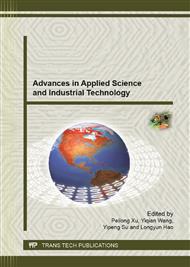p.435
p.439
p.443
p.448
p.452
p.456
p.460
p.464
p.468
Micro-Defects Test Simulation Analysis and Experiment Research under Alternating Electromagnetic Excitation
Abstract:
Alternating current field Measurement is one of the important progresses about electromagnetic nondestructive testing in recent years. Alternating magnetic fields excitation testing model is established by using electromagnetic simulation software ANSOFT, a flat plate crack defects are simulated. By analyzing its principle, crack depth and the width change influence on test results, finally the simulation results are verified by the method of experiment. The experimental results are consistent with the simulation results. The results show that this differential probe has good effect on crack defects test.
Info:
Periodical:
Pages:
452-455
Citation:
Online since:
September 2013
Authors:
Price:
Сopyright:
© 2013 Trans Tech Publications Ltd. All Rights Reserved
Share:
Citation:


